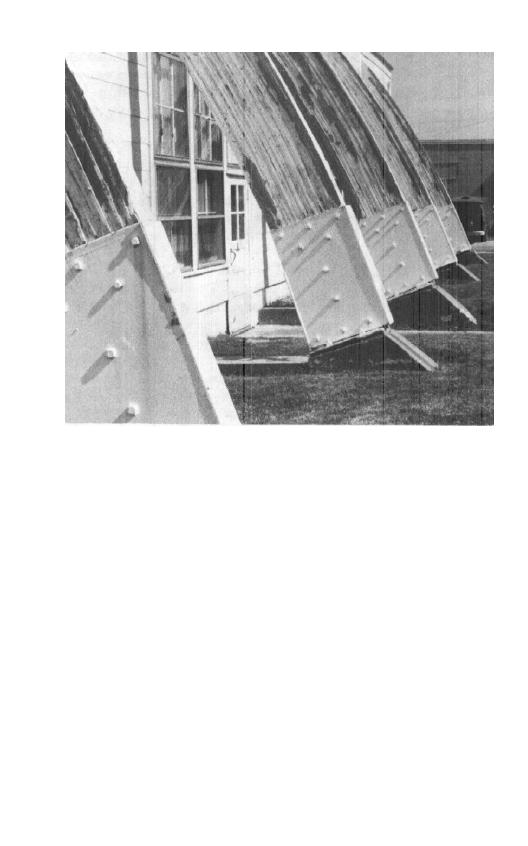

Custom Search
|
|

|
||
 Figure 1-5. Outside Structural Members. (Structural members extending
outside the roof line are particularly vulnerable to decay because of
exposure to rain. These arches were being repaired at the time the picture
was taken.)
vatively treated under very strict quality control. Exposure of wood to water
may also be caused by poor maintenance such as failure to repair a leaky roof
or other defects that allow rain entry. Skylights are particular hazards for rain
entry or for condensation on the inside of the glass where water from either source
can wet a wood element. Thus, attention should be given to decay possibilities
in structural members adjacent to skylights.
alone. The service life of all commonly used building timbers depends on their
being protected from a variety of deteriorating agents. Given the appropriate
conditions, deterioration encountered will usually fall into one of three principal
categories: (1) biological, (2) physical, or (3) chemical.
ties of living organisms such as fungi and insects.
1-12
|
 |
|
 |
||